
My Role
I had the pleasure to work with one of the big four banks as a User experience facilitator for their internal design thinking training program. I was a facilitator for the advanced and expert groups. The advanced groups were for the employees and the expert groups were for the managers. As a facilitator I helped all of the groups with any questions they might have about design thinking and also created the deliverables for them all. I worked with the groups at every step of the process from understanding the problem / vision statement right through to prototyping.
The challenge
ID ME is a project of one of these groups. Employees got the opportunity to explore their ideas through this design thinking program. The vison is to create a trusted digital ID repository. This bank has around 6 million KYCs (Know Your Customer). As a strong trusted brand it would make it a suitable place to validate a person. The bank would require some regulation in the market place to allow this.
Design Thinking
Empathise
First step in design thinking is "Empathise", this is all about understanding the people who will be using your product.
- Who are they?
- How do they go about their day-to-day tasks?
- What point in time do they encounter this problem?
- Where are they when they encounter this situation?
- How do they currently work around this problem?
These are the questions we went through within the group and got the whole team thinking about this User Centered Design (UCD) process. The group noticed that university students after have to re-apply after every semester. Currently, they have to provide copies of their identification over and over. The bank saw a great opportunity to aid this process by providing a go to identification repository.
Define
Now we have our problem framework and our vision that we will work towards. This gave us the point of view of what we are working on and how we can achieve success. Our problem statement was "We believe that by creating an easier identification process for overseas university students will make it easier for them to re-apply to university courses each semester."
Ideate
Now that we know what we want to achieve, it is now time to put our ideas down onto paper. We adopted a mobile first approach and went to work building a mobile identification process.
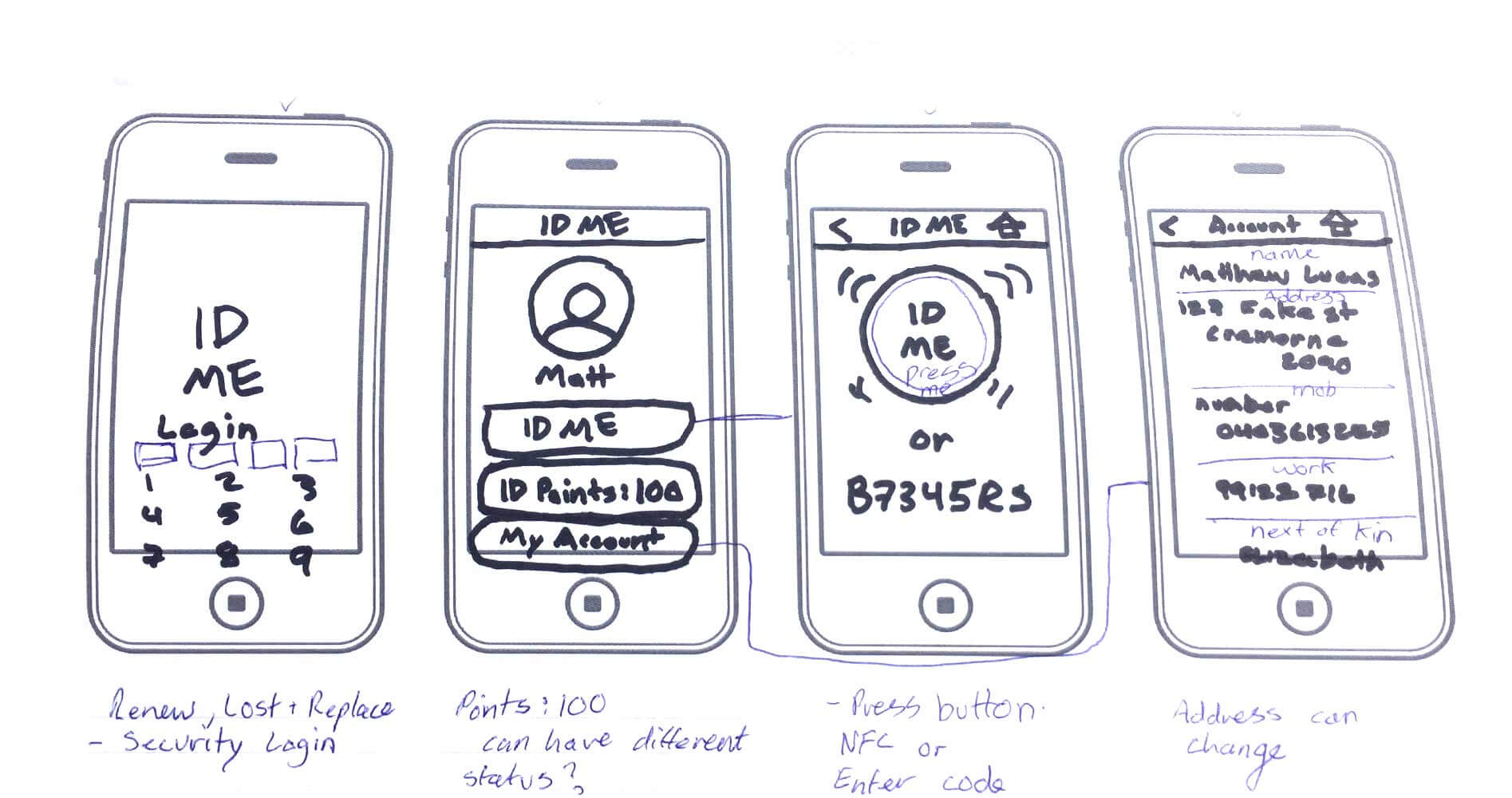
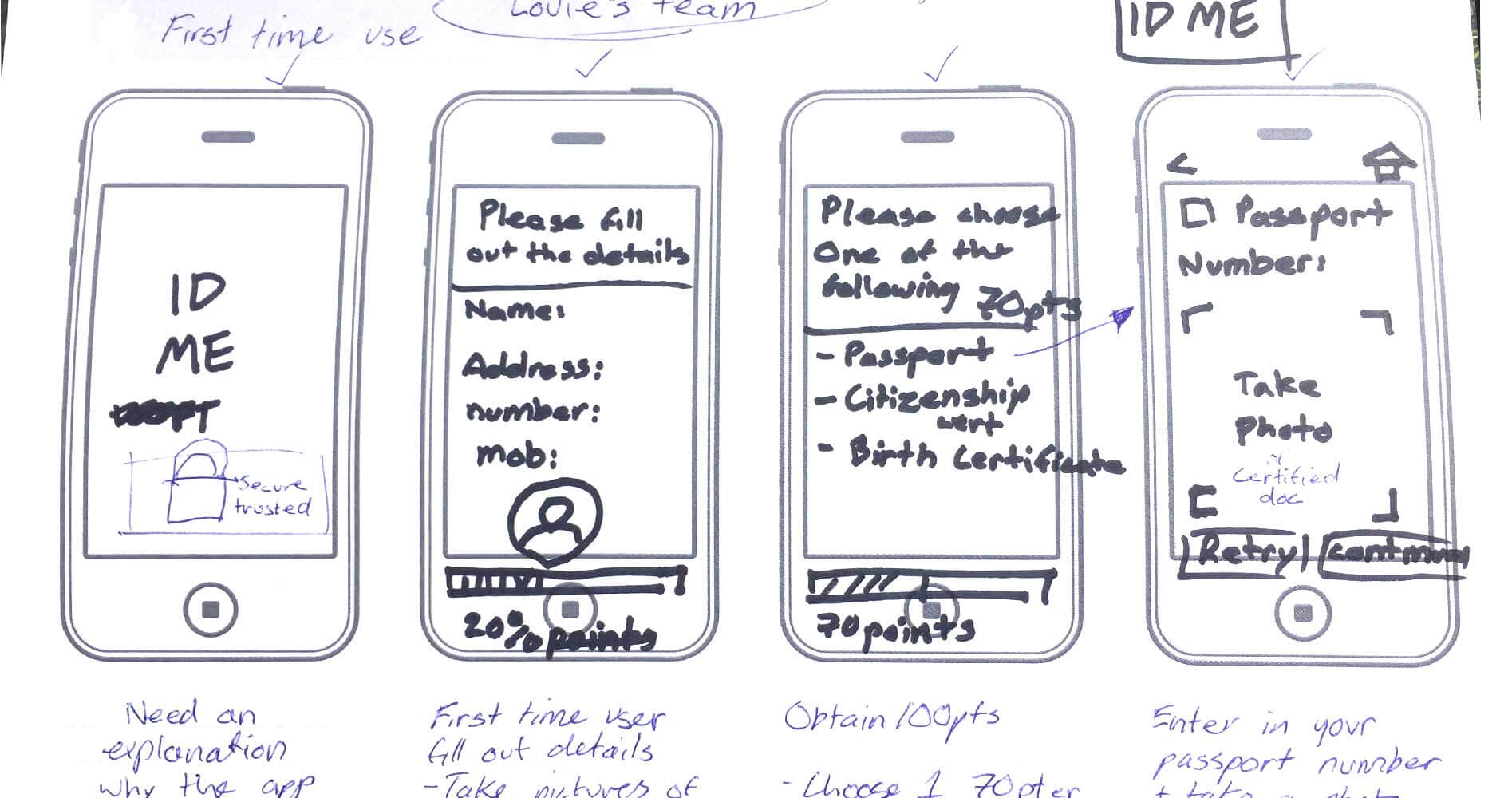
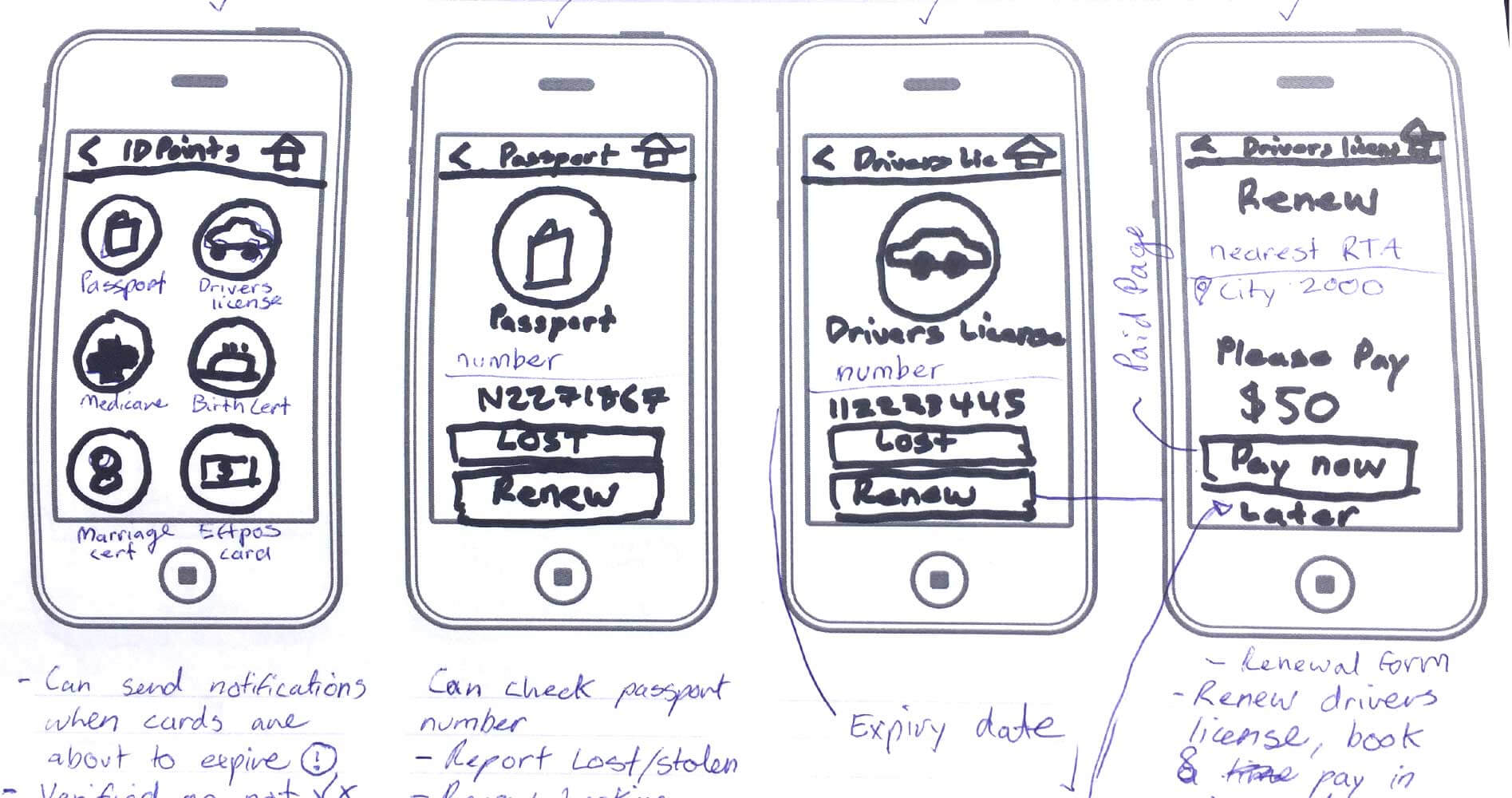
At first I Created the initial low fidelity wireframes of how this process would all work. After a few rounds of iterations, we got closer to a usable product. Making sure we are make the identification process as frictionless as possible. I got information from the RTA (Roads and Traffic Authority) of what makes up 100 points of ID. Also which artefacts are worth how many points. Working in passports, Drivers Licenses, Birth/Marriage certificates, medicare and EFTPOS cards.
Prototype
After a few rounds of changes our sketches are now ready for high fidelity screens. The main User journeys for the app is if the international student lost their passport, and if a domestic student needed to update their driver's license.
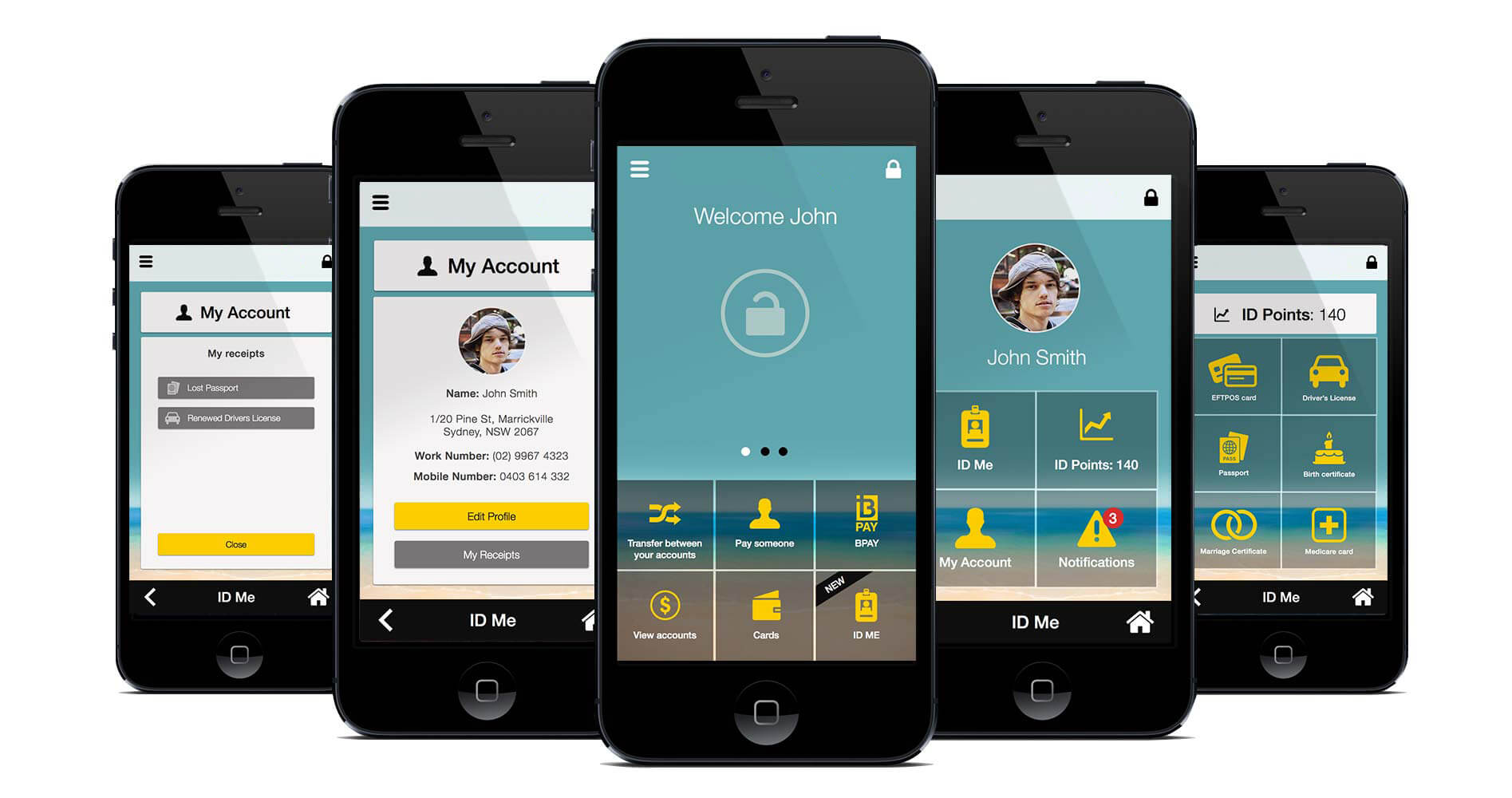
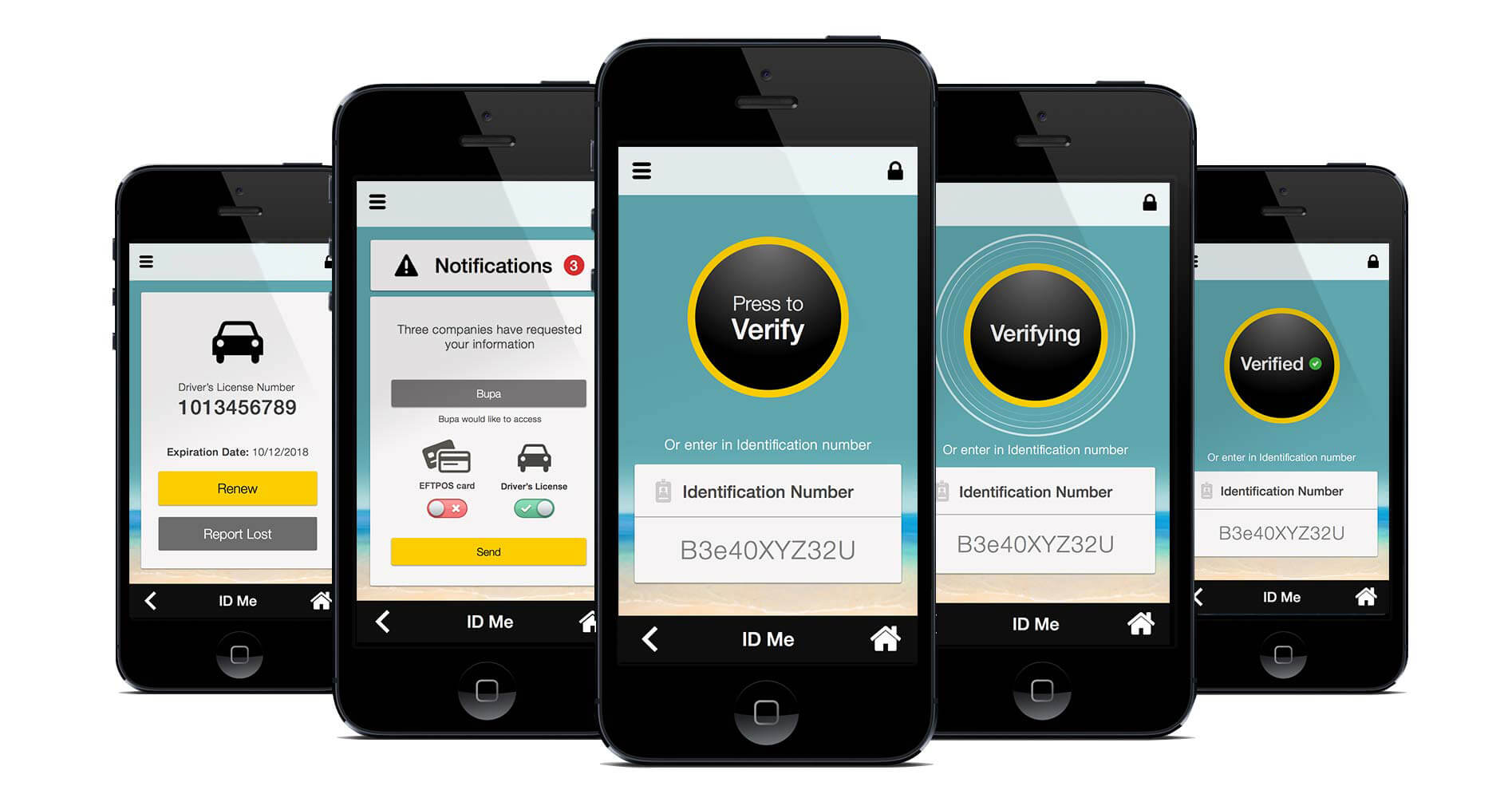
Test
Now the group had a prototype that was ready for testing. I gave the team a framework of what qestions to ask during testing and what outcomes they were after. Also I provided some usefule hints and tips of how to carry out usability testing to do with the prototype. After the course was over three of my groups projects got approval internally and are being worked on to go out to market, which is truely exciting.
To view the prototype, please click on the link below. Thank you.